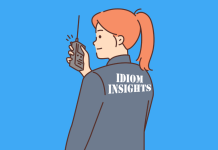
The word “load” appears in many familiar idioms and phrases. We might “carbo load” before a race or “get loaded” over the weekend. As well, heavy equipment operators must keep an eye out for “shock load” that throws off the balance of the load and puts the machine at risk of tipping over.
The Contact Center “load” is the single most important aspect of planning for your Contact Center resources. If the load is miscalculated, no amount of management expertise will offset the failure. When it comes to Contact Center management, determining the “load” is of utmost importance in meeting its primary objective. Simply put, it is “getting the right number of people in the right place at the right time.” (See January Pipeline article.)
In 1985, Gordon MacPherson founded the Incoming Calls Management Institute (ICMI) and was the original author of ICMI’s Essentials Skills and Knowledge Seminar (ESK).
MacPherson wrote:
“Everything to do with resourcing a Call Center starts with determining what the calling load will be. In the ultimate sense, the call load determines how many agents are hired. The number of agents on the busiest shift determines how much space is required; how many lines are necessary; how many chairs and desks and workstations are purchased; how big the parking lot has to be; even how many sandwiches are brought into the lunchroom’s vending machines. If you get this part wrong, no matter how good your management, and no matter how efficient your agents are, you will be lost in terms of meeting your Service Level objective.”
The load the Contact Center carries is made up of multiple elements and today’s Contact Centers handle multiple workloads across various channels. For this article, I will focus on forecasting the call load.
The Forecasting Formula
Calls are forecasted first as they are considered the most “perishable.” This is reflected in the significance given to abandon rates. The call load is essentially an equation: Volume x AHT (Average Handle Time) = X number of seconds of work to be done. AHT = Talk + After Call Work. The call load is calculated in 30-minute intervals across all hours of operation.
This basic information is available via your ACD reporting engine and is used by Workforce Management to determine resource requirements, shift structure, and schedules. If the call load is not accurate, the resource forecast will be wrong. The importance of accurate Handle Time data cannot be overstated.
Understanding Call Load
The three components of the Call Load equation are Call Volume, Talk Time, and After Call Work. All are found in your ACD reports catalog. Reports are generally organized by group, skill, or queue. (Some vendors alter standard ACD nomenclature. Insist on a glossary of terms to assure that you understand what information is found in what report.) And please keep in mind that agent reports are NEVER used for planning purposes.
Call Volume
When it comes to Call Volume, “offered calls” is the report field used for forecasting purposes. Offered calls is the sum of answered and abandoned calls. It is also important to know the origin of these calls. Many Contact Centers sit at the bottom of a funnel and demand pours in from multiple departments across the enterprise. An understanding of call origin helps identify cross-functional partners. These need to be included in future planning as does process analysis in order to gain efficiencies. Cross-functional partnerships must be developed to understand and plan for future demand.
Volume must also be assessed in terms of frequency and complexity, as this impacts resource allocation. High complexity contacts are often routed to more senior agents while low complexity tasks are targets for self-service. Planning for the cognitive load of demand aids the development of staff, training, and tools associated with handling those calls.
Talk Time
In the many years I was an ICMI instructor for ESK, I conducted an exercise for Talk Time. I recommend you undertake it. Assemble selected team members and pose this question: “What goes into Talk Time?” You will be met with some blank stares as if the answer is obvious, it’s agents “talking!” But when asked to think about it, it becomes clear Talk Time is made up of many components. And few of these are the sole responsibility of the agent. Agent skill is certainly part of Talk Time … ability to control the call, understand the caller need, deescalate, etc. That skill is at least somewhat impacted by how well agents are selected, trained, and coached.
“It’s not the load that breaks you down, it’s the way you carry it.” —Lena Horne, American Singer
Processes and systems are a major part of Talk Time. If the network is slow to respond, Talk Time goes up, “system is slow today.” There is nothing agents can do if they must jump from application to application, cut and paste information, or navigate a confounded knowledge base. All this is part of Talk Time! And yet, far too many Contact Center leaders decide that agents are where to go to reduce talk time when the greatest talk time reductions are process driven. They are NOT driven solely by the performance of individual contributors.
When an agent puts a caller on hold it is reported as part of Talk Time. Some systems break it out, so you must know how your reports treat these various states. Make sure the best reports are being utilized.
After Call Work
Make sure your agents understand After Call Work (ACW) is an ACD state that stops calls from being presented to an agent. The Not Ready state (Idle, AUX, etc.) also stops calls. The fact that both these states stop calls from being transferred to agents means that they must be carefully understood by those expected to use them properly! It is important to know that ACW is part of the call load, while Not Ready is part of shrinkage. Shrinkage is caused mainly by scheduled events within the day (e.g., breaks, lunches, training, meetings, and other duties).
It is critical that agents and management understand that ACW as part of the call load calculation makes its accuracy crucial. Sadly, ACW has a near demonic reputation. It is often considered a place where lazy agents hide out. While I can’t say that never happens, there are certainly plenty of processes that require work to be done after the call. The best planning includes the accurate capture of ACW time and a workforce you empower by educating them as to the importance of accuracy and utilizing a manually executed ACW.
ACW has two simple rules to help your agents know when to use it:
- The work must happen immediately after the call
- The work must relate to the call just taken
Educate agents that the call load is calculated in 30-minute intervals and represents the total number of seconds of work that must be done within that half hour in order to get the right number of staff in place at the right time. Provide examples of specific transaction types that require the use of ACW. Be very cautious of pushing post-call work to “later” especially when later never comes.
ACW can be programmed for manual access or it can be timed. I am a fan of the manual access method while some folks set ACW to a specific allotted time. Regardless of how it is configured, do not make ACW sound like a police state in which you oversee compliance. Rather, spend time educating agents on its importance. As well, you might have your business analysts work on how process improvements can reduce or eliminate the need for ACW.
It is important to examine your plan and your forecast for load. What is your level of accuracy? For most, an acceptable forecast accuracy rate must be within 5%. (For example, if you forecasted 100 calls and 97 arrived, that is 3% off forecast or within acceptable range.) If your Contact Center is small the acceptable rate may stretch to below 10%. But the highest levels of accuracy in the forecast make the highest positive impact on overall performance.
Whatever that load is, management’s job is to make sure the call load is accurate and understood…
Yes, your agents will of course “carry the load.” Whatever that load is, management’s job is to make sure the call load is accurate and understood across the center to effectively staff and lead. In fact, a Key Performance Indicator (KPI) for managers ought to be that they accurately forecast for sufficient resources, if those resources go unfunded, the Contact Center is at risk through no fault of their own. However, If you do a lousy job at planning, your agents will struggle to do their job well. If you see service levels drop and abandon rates rise, don’t look first at your agents. Re-examine your plan!




